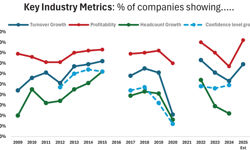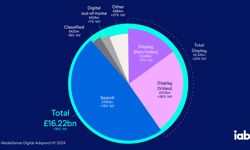Five years ago the Economist Group – publisher of the Economist – took the decision (aka leap of faith) to develop the "single view" of its customers across its worldwide businesses. Integral to the group’s strategy to own and develop profitable global media brands for the high-end audience, the database was to become an essential strategic marketing tool to serve the whole of the Economist Group.
The gamble paid off. With the aches and pains of the initial investment, the build, and the corporate politics of sharing data behind us, the group customer database now turns a substantial profit and is an integral part of our marketing and sales operations. It has helped the group capitalise more quickly on recent economic upturns, has addressed the data protection considerations on a global basis, and extended its use – and therefore value – into areas that had not been foreseen at the onset. Namely, to:
* Build longer-term revenues through increased cross-sell and up-sell activities, leading to lower marketing costs and increased efficiencies;
* Facilitate a greater level of group collaboration and develop a group capability;
* Create a customer knowledge and information base aligned with the needs of both the group and those of advertisers;
An international media network
The Economist Group is the leading source of analysis on international business and world affairs. Its suite of magazines, specialist publications, research reports and conferences are delivered in a full range of electronic and print formats, with some 3,000 titles available to customers across the globe. Headquartered in London, the group is made up of four main businesses - the Economist, the Economist Intelligence Unit (EIU), CFO, and government publications - each with commercial operations, sales, marketing and circulation departments in cities around the world in order to best meet the specific needs of their markets.
Getting there
Entirely custom built (both the data integration process and marketing database functionality) the database holds 6.4 million past and current customers and website registrants, sourced from 32 feeder files in 12 international locations on a monthly basis. The user base is anywhere from 65 to 130 regular or occasional users worldwide, including the group CEO. The information is available on everyone’s desktop with secure access. The initial cost for the data build – often the Achilles’ heal of such projects – was 36% less than the median for international data, and moreover included the development of a browser-based marketing database. Technical development was out-sourced while an internal database marketing team of three people - part of the group marketing and strategy division – manage the database, support users, and develop customer insight and business analysis.
Integrating the various customer files and building the database took only a year and it launched in 2002. It was now possible to see for the first time, for example, how many Economist subscribers also subscribed to the EIU’s Country Reports or sponsored a conference. The number of customers who have a relationship with more than one business unit has grown by 69% in the last two years and they are worth £44 million, excluding advertising spend. Because we can identify and profile them accordingly, we can nurture the relationship to better meet their needs while, at the same time, creating more value in an increasingly profitable and focused way.
A customer in every country of the world
A truly global company and customer base pose unique challenges in the development of the "single customer view". Not least the fact that each group business, and in most cases each regional business, has its own local fulfilment system operation as well as different contact management systems holding customer data. Indeed, on average, each business runs approximately 10 systems across the different regions.
The data covers a mix of business-to-consumer and business-to-business customers, with individuals spending anywhere from £4 to more than £500,000, buying anything from one to 300 publications or 75,000 licenses to an editorial database. There are paid and controlled circulation subscribers, agents, gift subscriptions, one-off conference attendees, website purchasers and registrants, and online newsletter subscribers. The issues thrown up by international data keep growing as we ponder the integration of CFO China – in Chinese.
The more it’s used, the more value it creates
Much like the database development and roll-out strategy, use of the database has been iterative and grown in line with both real and perceived benefits at the group and individual business unit levels. Starting out as a rather sophisticated list management tool used primarily for basic cross-selling and up-selling customers it is now an integral part of marketing and has gone on to make significant contributions in supporting our sales efforts. Indeed, the reality, and particularly success, of having the single customer view across subscribers and readers has now also given rise to the need for – and prompted the launch of – the single client (ie corporate) view of advertisers and sponsors.
However, usage – and therefore value – is different for different business units. It depends on a combination of factors such as the number of publications or products they can cross-sell or upsell to existing customers; the frequency of their direct marketing campaigns; the level of data literacy and data-driven marketing skills; the quality of and confidence managers have in their own source systems and source data; the degree of perceived or real benefit to their individual businesses and to the group as a whole.
Nonetheless, the increased functionality, quantity and quality of data which the database offers, its significant segmentation capabilities, and automated management of data protection preferences as well as the ease with which it enables businesses to share data in a controlled way have all played an important role in driving usage and therefore value. However, the data, marketing, and analysis skills of the database marketing team have been the key drivers behind the continued shift from "low-value" data output services, to higher value analysis and development of customer insight as well as bespoke projects such as discreet database and data management capabilities. In addition, it has reduced the businesses’ dependency – and therefore costs - on fulfilment bureaux for information about their subscribers, general data skills, and other services which are now available through the group customer database.
Building knowledge
As both the level of usage and the number of users increased, so did the call for more customer insight and analysis across a number of tactical and strategic areas. For the first time, it was possible to, for example, look at trends in spend levels in the US academic market across the entire group. Or do like-for-like comparisons of renewal patterns by country or region and by business unit and finding that while some publications in some business units have seen a drop in renewal rates in certain countries, others have seen significant growth. Standardised geographic data enabled the development of country or region-focused campaigns across the group irrespective of products purchased.
The database also provides backup analysis for the sales and advertising departments in support of RFPs and other proposals.
Sharing data
The fear of losing control of their data - now that it could be accessed centrally – was a contentious issue along with the risk of cannibalising each others’ key assets. Indeed, the high cost of acquiring a new customer for one business became the very profitable up-sell for another. The development of an automated email-based "permissioning" module where businesses sign-off on the use of their customers has gone a long way to appeasing fears and increasing the level of cross-sell and up-sell activity. In essence, it enables the businesses to share data in a controlled manner. As a result, 59% of the data is shared across the business units, making a significant contribution to customer lifetime value.
This capability has increased the awareness of worldwide group campaigns giving rise to opportunities for sharing costs and marketing activities. Moreover, the database creates customer contact history and a history of campaigns across the businesses which can reduce over-reliance on the knowledge of individual staff as well as reduce training costs.
Cross-fertilisation of data
The integration of the group’s website data has pushed the benefits of merging data to new heights. As a result of acquiring email data from the overlap with Economist.com and EIU.com registrants and content buyers, the Economist print subscription business has been able to shift many of these subscribers from print to email-based renewals programmes generating considerable cost savings. Furthermore, analysis shows that subscribers who access content online are 20 times more likely to renew than those who do not.
Data protection and protecting customers and the business
Ensuring compliance with data protection regulations in the UK – let alone in the rest of the world – is today reason enough to justify the investment in a group customer database. This is particularly the case for publishers who may be dogged by legacy systems with sometimes conflicting privacy preferences. A centralised marketing database which creates the single view of a subscriber’s privacy options and automatically applies these to every type of campaign significantly reduces the risk of lawsuits brought under the diverse data protection legislations.
Towards a more customer-focused approach
In addition to producing monthly database usage statistics for the board, the database produces business intelligence and operational reports for individual business units to help drive a more customer-focused approach and take a more strategic view of customers rather than just products. This includes customer trends such as the number and value of group customers over time; the levels of data sharing across the businesses; the number of times customers are contacted; data privacy trends and levels of customer opt-outs over time.
List rental production
While list rental has always been an ongoing activity for each business, the database now supports the production of list rental and swap orders. This has created considerable efficiencies and cost savings by eliminating the time and cost of shipping data between fulfilment and list rental production bureaux.
Corporate acquisitions
As part of the group marketing and strategy department, the database made a significant contribution in helping to assess synergies with the customer base of potential corporate acquisitions or new launches. Again, a centralised customer base enables not just a much faster and cheaper overlay process, but achieves a more accurate and reliable comparison of customer profiles.
A group approach to sales
The establishment of a new group sales department in April 2004, with a remit to increase the level of spend across the group’s businesses, gave rise to the development of the single client – or corporate - view of advertising and sponsorship spend across the group. The department was able to leverage the investment and skills underlying the group customer database. Within four months, they had instant access to the group’s top advertisers as well as access to a marketing and analysis tool to help develop opportunities and build stronger relationships with existing advertisers and sponsors.
The growth in usage and profitability of the database has not been without its challenges, some of which have still to be overcome. But most importantly the group customer database has proven it creates value, builds knowledge and insight, and is a dynamic force for change.
FEATURE
How the Economist uses and profits from its single view marketing database
One of the most notable features of the best database installations is that many of the key benefits emerging over time are not those planned at the outset. The Economist’s Simone Wieser talks us through her experiences.










